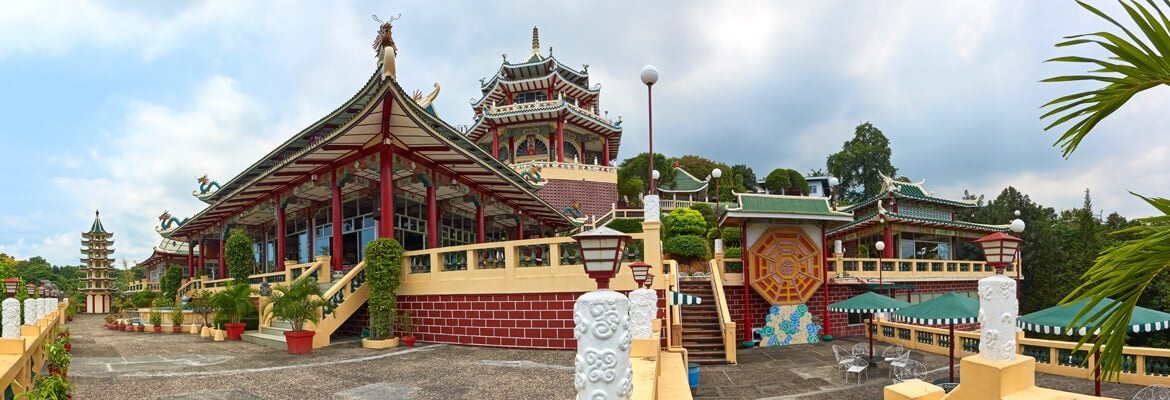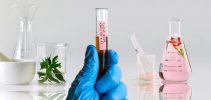Author: Mary Saunders
It is a wonderful thing to belong to a lineage of knowledge.
I remember when I came to belong to this one. It was 1984 in Santa Fe, New Mexico. Our small acupuncture school shared the space of a martial arts dojo on Cerrillos Road. One of the classrooms was the main training area of the dojo, the space infused with the aspirations and sweat of many students. One afternoon I was sitting on that wooden floor when I heard my name called. A bit sleepy from lunch I hadn’t been tracking the lecture, nor did I consciously understand the question, but I instantly came alert and responded correctly nonetheless.
How is that even possible, I wondered? My entire life was built on the belief that everything depended on my continuous effort, determination, and will. This was an entirely new way of being, one that would require more receptivity to allow for what I call the magic of alignment – being in the right place, at the right time, with the right people.
Ted Kaptchuk’s The Web That Has No Weaver had been published the year before and along with The Essentials of Chinese Medicine, were the only texts available. We learned the Taoist way of seeing based on observation, listening, and connection to the natural world. Health and disease were inextricably tied to the way a person lived. I learned that healthy, whole, and holy come from the Old English word root hal. I knew in my bones, even though the mind wanted to separate them, that all aspects of our being are interwoven: to be healthy is to be whole, is to be holy.
The opportunity to immerse myself in this tradition felt like the response to a call, a longing, that many of us had. We were searching for a way to understand the richness and complexity of life which the prevailing culture in the West, with its emphasis on consumerism, wasn’t addressing, much less satisfying. There was a profound sense of relief to finally be initiated into this broader, deeper way of seeing! It gave us tremendous hope to know that wholeness for ourselves and our patients was possible and to some degree at least, dependent on our own behaviors.
The limitation placed on us due to the lack of outer resources was a blessing in disguise. Because there wasn’t a clear path established, no accredited schools defining exactly what we had to learn, hour by hour, we were free to follow our own path, finding it one step after the other.
One of my teachers at that time, Stuart Mauro, was a shaman acupuncturist. He did treatments with me that unexpectedly opened my eyes to the possibilities of this medicine beyond addressing physical ailments. I now knew, because I had direct experience of it, that the oneness of body-mind-spirit was real and there were known techniques to access it within myself and others. And most importantly, that my oneness of being was connected to the greater oneness of life.
I wasn’t special, nor was I alone. Varying combinations of this lineage of knowledge manifested in my classmates and teachers. There was a connection being made through us to this tradition and over time, these roots penetrated into communities throughout the country.
Last October, Pacific Symposium celebrated their 30th anniversary and three elders were invited to present. Ted Kaptchuk spoke about how modern Chinese medical texts were scrubbed of any references to spirit and focused narrowly on the physical in order to be accepted by the scientific community. And yet foundational texts, he said, such as the Su Wen and Ling Shu speak about “penetrating divine illumination” as a matter of fact.
Peter Deadman and Whitfield Reaves followed and there was a resonant sense of the lineage being present in the room. Listening to the wisdom distilled from their experience, I was reminded of what I had fallen in love with back in 1984: This tradition is an embodiment of the unity of body, mind, and spirit which makes it a powerful force for change, working on patient and practitioner at the same time. These elders had given themselves to the process, allowing themselves to be shaped by each encounter with a patient and each time they teach. Every year, the roots of the tradition working themselves deeper, ever deeper, into their being and into the communities they serve. Sitting next to me was one of my former classmates, Maggie, and I recognized this embodiment in her and in many others in the audience, manifesting more quietly but no less powerfully.
Mastery of theory, techniques, and business practices are important, but the totality of who you are is needed by your patients, loved ones, and life itself. As the Jungian psychologist James Hillman said, there is a relentless pressure upon each soul to create, to illuminate who one is through the act of creating. The psyche lives to be enlightened by seeing through itself!
Pay attention and you’ll observe patients who need to see you living this, and the ones who need you to remind them to live it for themselves.
As a profession we have worked hard over these last four decades to be invited through many doors of the established biomedical community. That is a laudable accomplishment, but it is not enough. It is time to come out from under our reassuring, clean white coat exteriors and once again reclaim the unity of being this tradition offers.
The Taoist masters understood the patterns of change that belong to the underlying flow of life, and it is these patterns, this flow of life, that need our care and attention. It is here that the future is constellated into form. Alarm bells may be ringing, but unless we work to help life change from deep within, nothing new can be born.[1]
To help life change from deep within, I believe we must begin by accepting that as individuals and as a global society we have been in denial of how our greed and overconsumption have contributed to the destruction of both the natural world and the physical, mental, and spiritual health of many in our community. Denial only seems to shield us, but the reality is that the body registers everything. We experience the stress of living at this time of planetary crisis below the surface of conscious thought as anxiety, depression, fatigue, insomnia, and constant dissatisfaction with self and others. We eat, drink, and work too much. Or exercise, party, spend, and diet too much. We construct ever more complicated and busy lives that require more work and resources to maintain. All in a desperate attempt to keep the truth at bay, but essentially only adding to the problem.
Believing we are separate from the Earth and separate from one another is an illusion we can no longer afford. We need to witness the consequences of our actions, feel the sorrow, anger, and pain we experience because of this situation and speak the truth of it, to ourselves and yes, to our patients. So many patients want more than a focus on their physical health; they need us to connect with them through our common humanity and reflect the light this tradition offers.
While reading Maoshing Ni’s translation of the Huangdi Neijing, I became interested in the section on the five failings of the physician. What drew my attention was the fourth failing which occurs in counseling: “When a physician is hasty and does not make the effort to guide the patient’s mind and moods in a positive way, that physician has robbed the opportunity to achieve a cure.”
Counseling is part of our job description as practitioners of this medicine. It isn’t therapy nor does it have to take more than a few minutes if that is all you have. It can be as simple as guiding your patients to connect to their experience in the present moment.[2]
Recently, I came upon an article in the Sierra Club magazine, Outdoors For All[3], which noted the research proving human health is benefited from having direct sensory experience of the natural world, leading some physicians to prescribe time in nature to their patients. Of course our health suffers when we spend all day indoors and on screens; this is simple common sense and a cornerstone of our Taoist tradition. And yet how many of us counsel our patients to rest by a stream or fountain, sit under a tree, or watch the night sky, turning from the yang push of more doing to cultivating the yin receptivity of simply being with oneself and the Earth? Or reminding them of the absolute necessity the soul has for creativity that Hillman speaks of and including creative acts — in the garden, kitchen, studio and at work — into their prescription for healing?
We can no longer wait for modern research to catch up with and validate what we already know in order to act for change nor think that working on the level of political or environmental activism is going to be enough. Honoring the oneness of body-mind-spirit, the underlying flow of life, by actually living it ourselves has to be the paradigm from which our actions now arise.
We in the West are not alone in this quest to return to our roots and to what has deeper meaning. A growing number of Chinese, dissatisfied with the shallowness of modern culture, are going to the mountains to live as Taoist hermits, practicing in silence and solitude.[4] This level of spiritual practice is still highly respected in China so there is a cultural context for the people who follow this path. What would it look like for our profession to support those who are drawn to work on this level?
I believe it is time for our schools, conferences, and national organizations to ask these kinds of questions. It is time each of us, and our profession as a whole, reclaim the roots of our tradition by including counseling, direct experience of the natural world, soul engendering creative and spiritual practices, and the cultivation of wholeness in the conversations we are having at every level of our profession. And most importantly, to once again be receptive to “penetrating divine illumination” in our daily awareness and clinical practice.
Like the day on the dojo floor when I knew the answer without trying, and at Pacific Symposium last October, and many times in my clinic, the magic of alignment is now possible. Right here. Right now. All we need are the right people to respond to the challenges and opportunities life is offering us.
My wish is for you to find your own unique ways to respond!
Author note: How to cultivate daily habits that support your well-being and capacity for fully participating in life will be unique to each individual. I’d like to offer you a handout for your personal and professional use, Five Essential Life Practices. It is based on my book, Rhythms of Change: Reclaiming Your Health Using Ancient Wisdom And Your Own Common Sense (2014).
Using techniques grounded in 30 years as a practitioner of East Asian medicine, somatic therapy, and meditation, Mary now mentors women individually and in groups. She also works with acupuncturists to integrate counseling techniques and the cultivation of wholeness into their practice.
For more information and to contact Mary:
[1] -Llewellyn Vaughan-lee, Including the Earth in our Prayer https://goldensufi.org/book_desc_including.html
[2] Contact me to receive the handout: Effective Counseling Techniques for the Acupuncturist
[3] https://www.sierraclub.org/sierra/2019-3-may-june/feature/outdoors-for-all-nature-is-a-human-right
[4]https://emergencemagazine.org/story/lone-moon-lights-cold-spring/
 FAST & FREE 2-DAY DELIVERY
FAST & FREE 2-DAY DELIVERY





